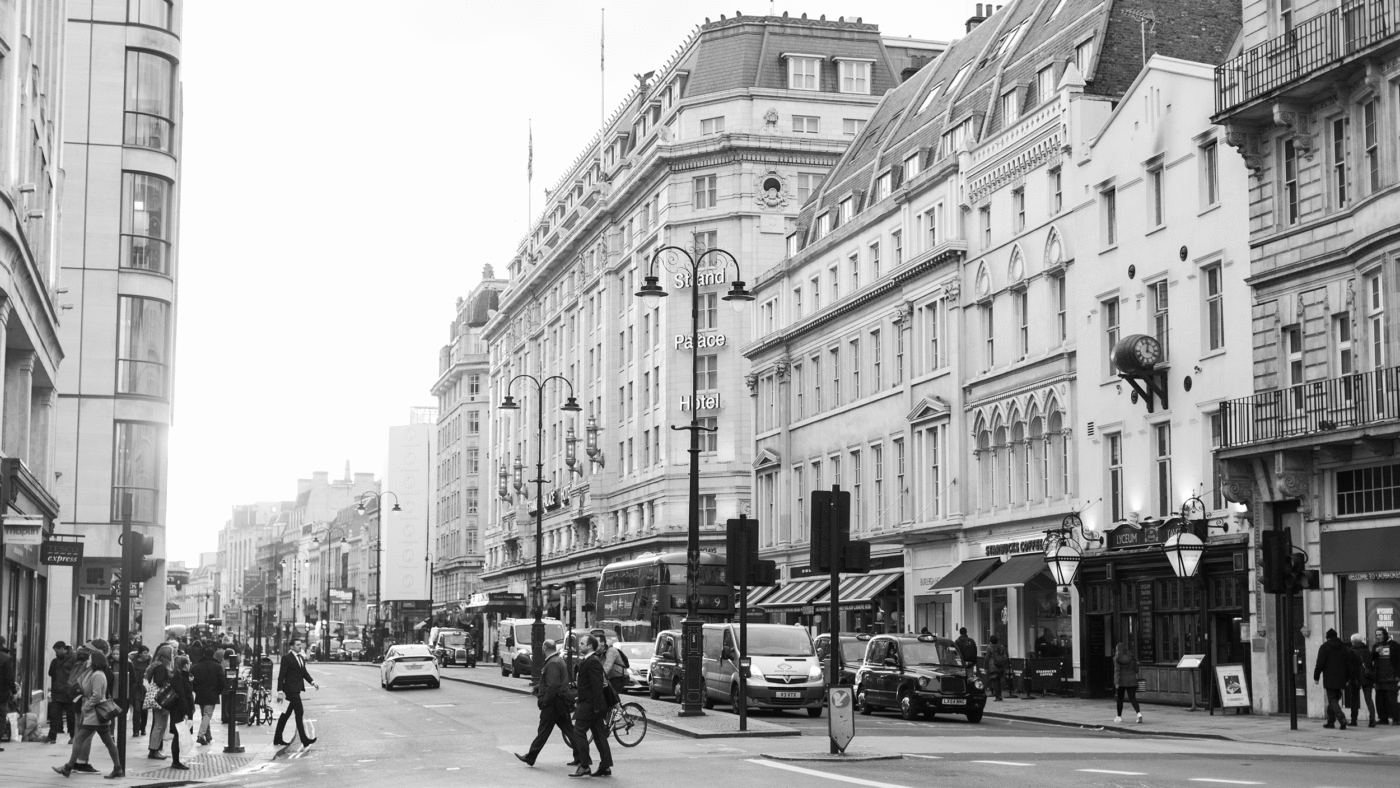Does Britain have too many old buildings?
It’s no secret that an aesthetic aversion to modern architecture is one of the reason Britain consistently fails to build the housing and infrastructure we desperately need. But if modern buildings are often too ugly to earn their place in the public realm, so are many of the old buildings we go to great lengths to preserve.
There’s a trend on Twitter of posting contrasting pictures of an impressive 19th century public building and the concrete horror that replaced it. This falls into a trap that ultimately won’t be very useful to the Yimby cause. Those old buildings are often fairly dull, clumsy, or just plain whacko.
The wholesale revival of traditional architectural forms isn’t the solution. Even if buildings really were more attractive in the past, throwing up a lot of mediocre pseudo-gothic architecture won’t create some sort of Studio Ghibli urban paradise. Walk along the Strand and really look at the buildings there. How many of them do you honestly love? How many really make you feel strongly one way or the other? Can you call any of them to mind as you read right now? If we want impressive new buildings we will need to confront the question of mediocre old ones.
In a recent interview with Anna Keay, historian of the 17th century and head of the Landmark Trust, a wonderful charity that restores old buildings and lets them out to holiday makers, Tyler Cowen asked: ‘Which are the old buildings that we have too many of in Britain? There’s a lot of Christopher Wren churches. I think there’s over 20… They’re not all fantastic.’ Keay baulked at the idea that some Wren churches may be less distinguished than others, but this is a useful thought experiment. Wren is the jewel in Britain’s architectural crown – what is London without St Paul’s or Oxford without the Sheldonian? Some 25 of his City churches remain, all now listed, which is to say, untouchable.
But another 25 of those churches have gone. St Dunstan, St Albans, Christ Church, and St Augustine were not rebuilt after the Blitz. (St Dunstan and Christ Church are now gardens, well worth visiting.) The Victorians demolished several that had lost their congregations. On the site of old St Mildred’s – a building no one seems to have lamented – there is now a proud and prominent Lutyens construction, 27 Poultry, currently The Ned hotel. You may know the statues of a small boy wringing a goose’s neck that stand at its corners.
We would be loath to lose the work of the creator of the Cenotaph, no doubt, but without the demolition of a precious Wren, there would have been no room for him and his goose-strangling child. Should we wish Lutyens away to bring back Wren? What about Wren himself, who was only able to build his churches because fully five-sixths of London was eaten by fire in 1666 – should we wish away his baroque St Pauls in order to bring back the marvels of the great medieval cathedral that stood there before, where Donne preached and Milton bought books?
This is the paradox: To get new buildings that are worth preserving we must sometimes demolish not just mediocre buildings, but ones that are worth preserving. Whether it is through fire, war, or demolition, new wonders only emerge when space is made for them. Anna Keay may have declined to pick a Wren church for demolition, but she took the broader point – not everything is worth preserving. She was even sympathetic with the people who demolished so much in the middle of the 20th century.
There is always a tension between progress and preservation. We have over 400,000 listed buildings in the UK. When buildings get destroyed by underhand means – such as the Firestone Factory which was knocked down over a bank holiday the day before it was due to be listed, or the Carlton Tavern which Westminster council ordered to be rebuilt in exact replica after it was demolished without permission – they become flash points of preservationist anxiety. But how special are they really? With so many buildings listed already are we really so desperate for one more 1920s pub?
Think of Wren. St Benet’s Paul’s Wharf is almost always closed. You can never get into St Peter’s Cornhill. St Mary-at-Hill lost its splendid interior to a fire. I say this as a regular and dedicated visitor of Wren’s churches, and one who has made no small effort to get into St Benet’s and St Peter’s – what exactly is being preserved in these cases? They are almost always empty.
Here’s a story of ironic architectural fashions to prove the point. When Lloyd’s of London demolished its old building to build the current inside-out concatenation of pipes and elevators by Richard Rogers in 1979, the Twentieth Century Society was formed to oppose the move. But, in 2011, the very same society was responsible for getting Rogers’ building listed. Quite the volte-face. At some point, anyone who wants to see great architecture in Britain needs to decide we have saved enough from the past and accept that we need to make space for the present. No-one has ever regretted the loss of Wren’s St Mildred, and if we want someone to build something new that is the equal of Firestone, the Carlton, or even Wren, we need a culture that accepts, maybe invites, the loss of some of the originals.
Click here to subscribe to our daily briefing – the best pieces from CapX and across the web.
CapX depends on the generosity of its readers. If you value what we do, please consider making a donation.


